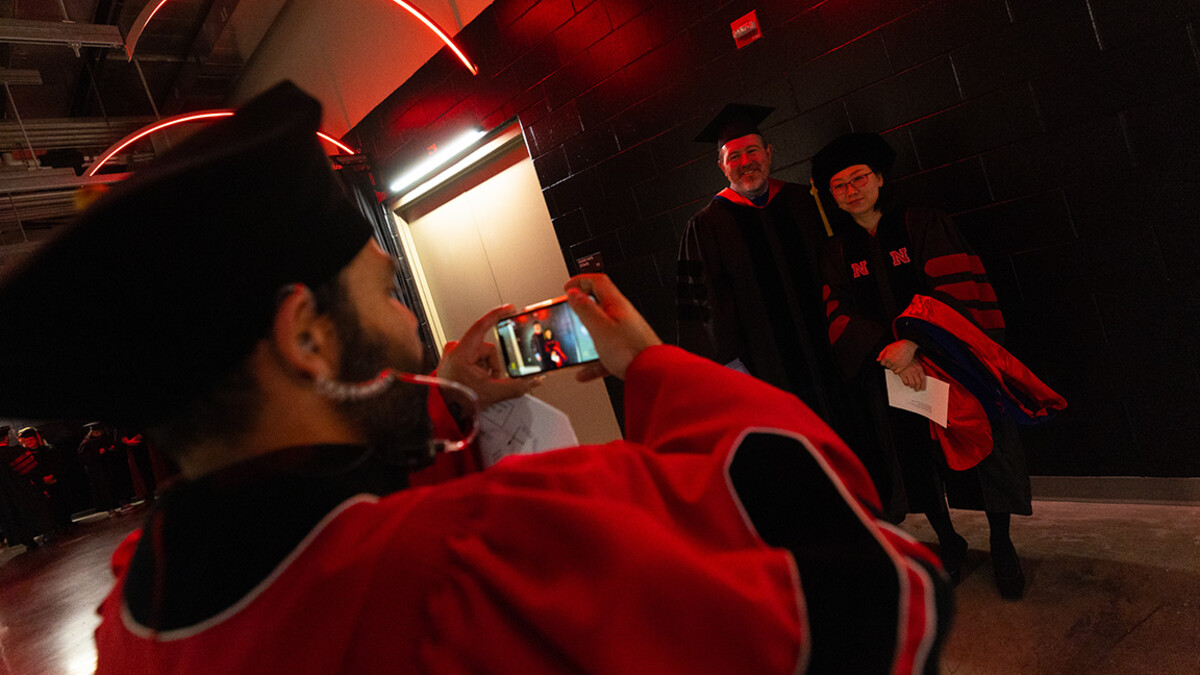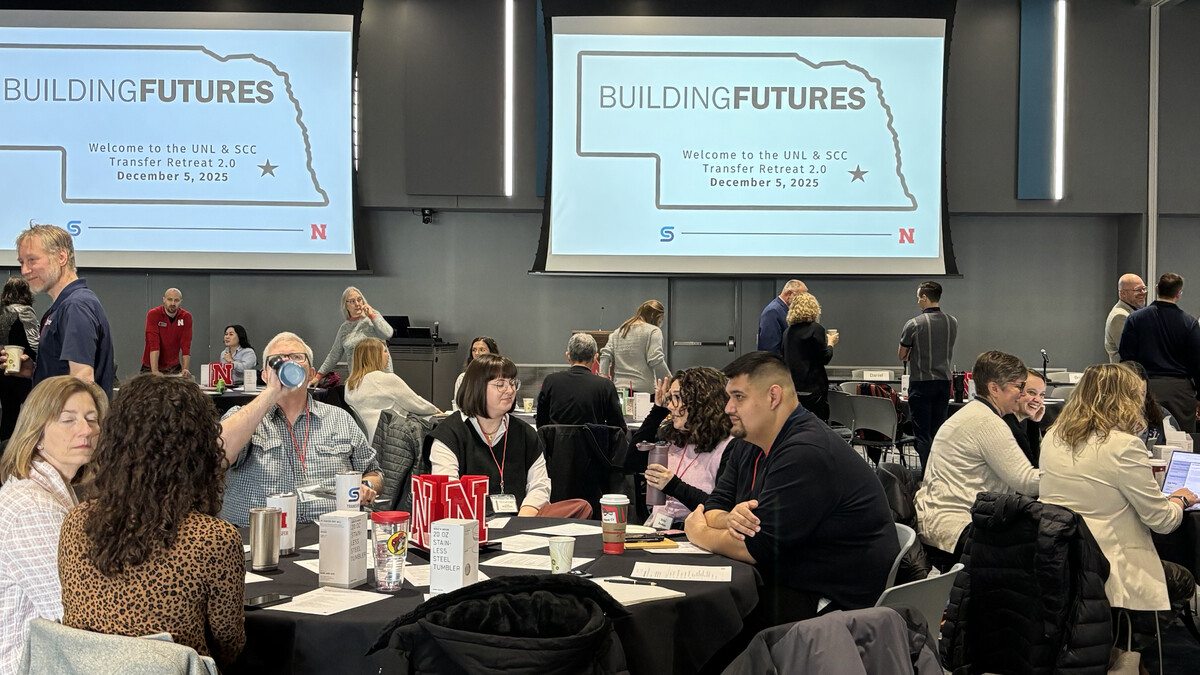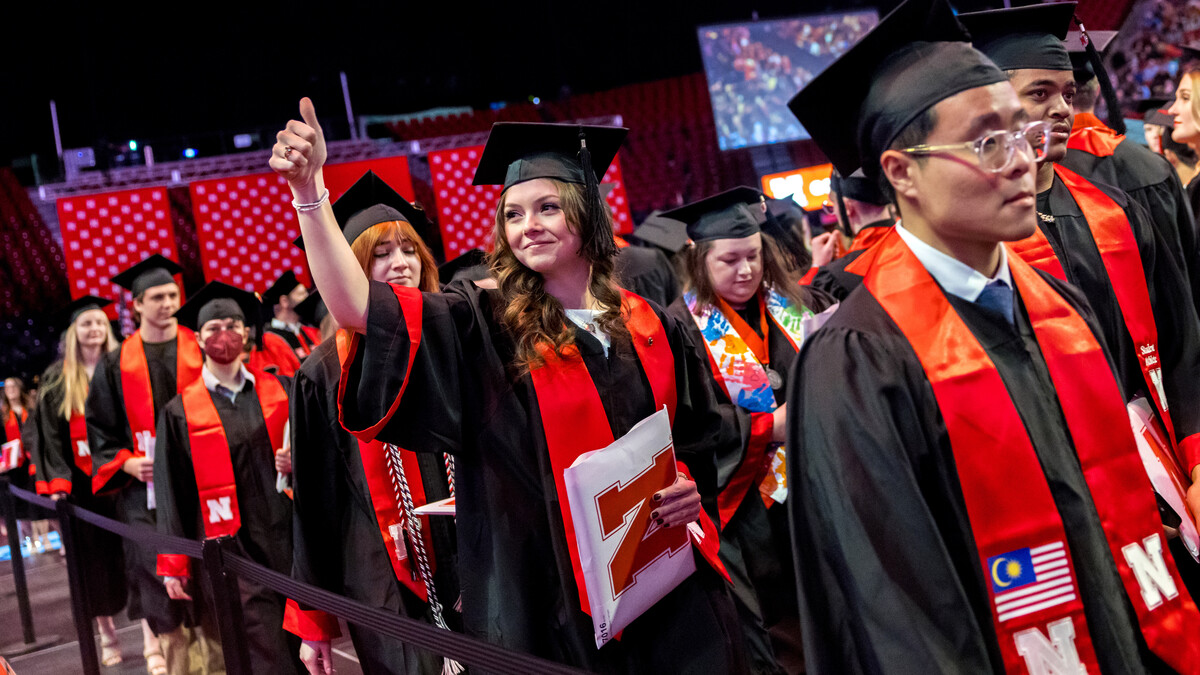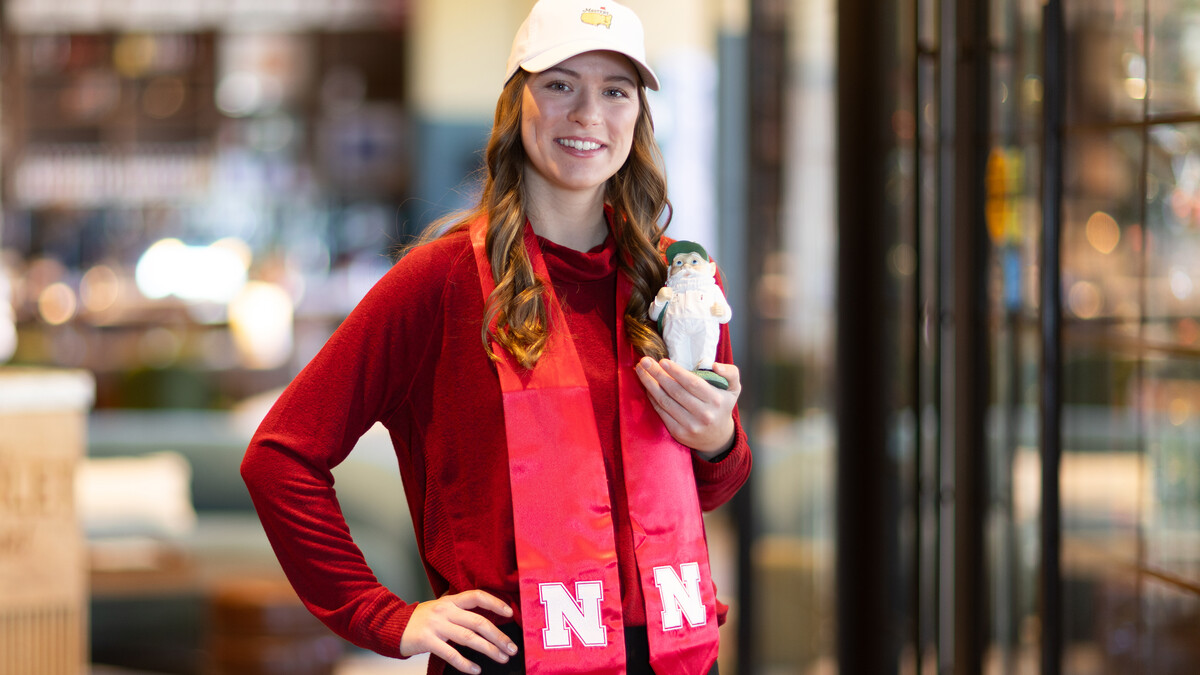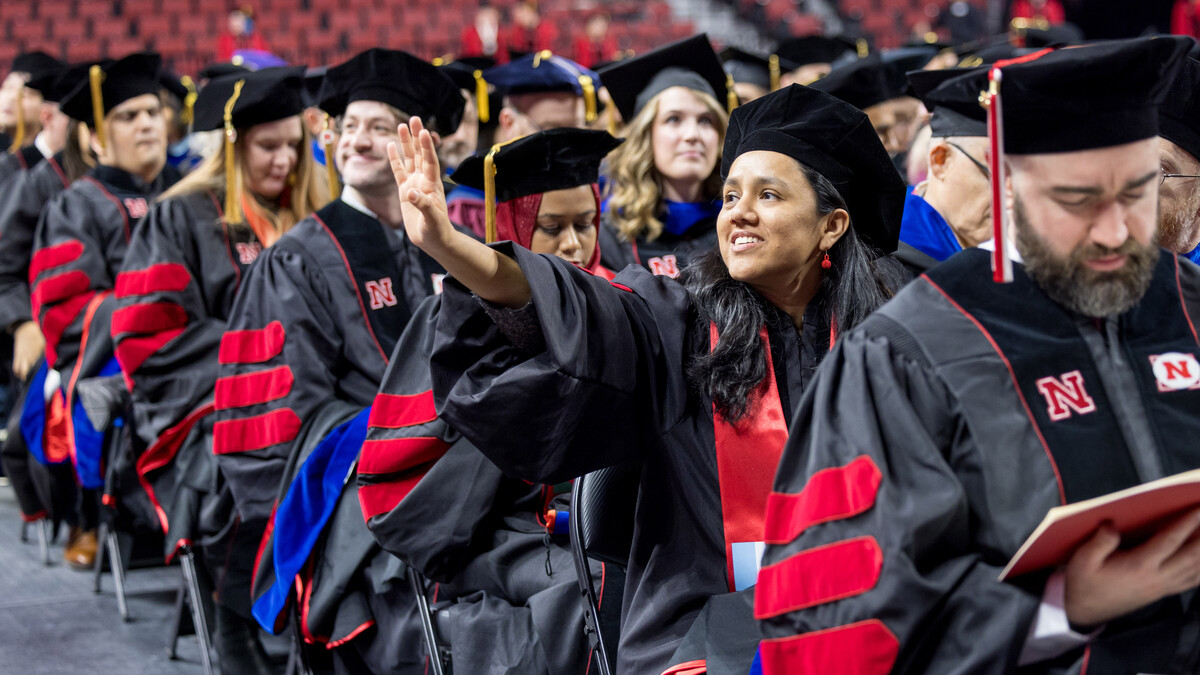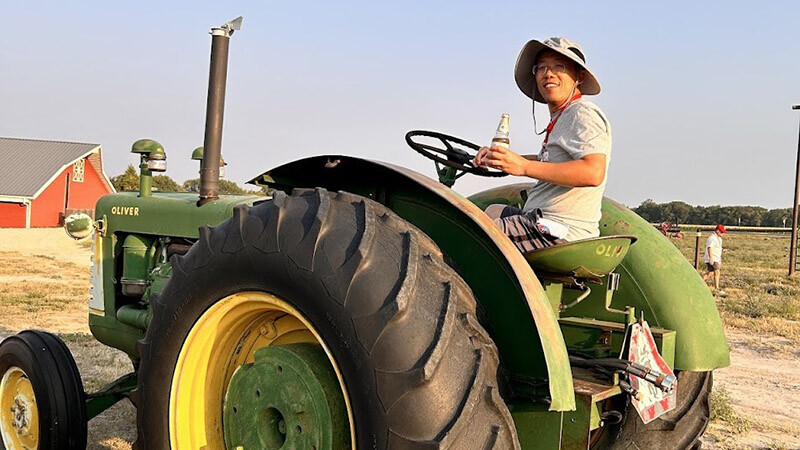
In recent years, scientists have detected methane gas from cattle burps and manure and nitrous oxide gas from nitrogen fertilizers. Scientists have trouble pinpointing the amounts of these two gases in the air because their equipment lacks accuracy.
Now, a University of Nebraska–Lincoln researcher is working to fine-tune the equipment.
Xiangmin Sun, a micrometeorologist who grew up on a farm in China, has been carrying out research at the Eastern Nebraska Research, Extension and Education Center near Mead since July 1 to improve how to measure methane and nitrous oxide. Along with carbon dioxide, the two gases make up the main greenhouse gases identified as causing climate change. Carbon dioxide appears in the atmosphere in large quantities and can be accurately measured with open-path gas analyzers. Methane and nitrous oxide cannot.
In open-path analyzers, air blows through the analyzer at the top of a tower and the equipment measures amounts of gases blowing through. Methane and nitrous oxide appear in too small quantities for an open-path gas analyzer to measure accurately.
For them, researchers use a closed-path analyzer. This equipment pumps air from the top of a tower down to a chamber where a laser analyzes the gas concentration. Even this analysis lacks accuracy for methane and nitrous oxide, though, because the tube delays the air being pumped to the laser, which analyzes it at 10 cycles per second.
Sun is testing different closed-path analyzers at Mead and trying to determine the time delay. If he can determine it, he can program the analyzers to correct for it.
He is also working with another micrometeorologist, Andrew Suyker, and a larger team to track the cattle at Mead with GPS collars. Mobile cattle pose a second problem for measuring methane in pastureland. The team is recording the cattle’s patterns of distribution and movement and comparing those to the continuous methane measurements taken.
Ruminant animals like cattle have four-chambered stomachs that ferment eaten plants into food. Methane is a byproduct of rumination. Nitrous oxide converts from nitrogen when plants fail to absorb the nitrogen in fertilizers applied to land. Sun said he thought Mead was one of the first sites to measure both the methane and nitrous oxide in pastures.
"How to accurately measure the methane and the nitrous oxide is really important for us to develop a sustainable agricultural practice to reduce emissions of greenhouse gases and also keep the yield of the food we can produce from the farmland," Sun said.
The team is researching which farming practices could help lower greenhouse gas emissions. Besides looking at practices such as tillage or no till, manure or human-made fertilizers, irrigation times and corn-soybean rotations, Sun said they would like to determine whether corn or soybeans might release more nitrous oxide.
If cattle turn out to be a major contributor of methane, he said researchers would like to determine which foods or food additives might lower methane emissions.
"It is all about the carbon footprint of those different agricultural practices," Sun said.
Greenhouse gases are thought to heat the earth by trapping energy that would have left Earth’s atmosphere into space. Methane and nitrous oxide are more powerful at warming the atmosphere than carbon dioxide is, but they also appear in smaller quantities. In comparing their dangerousness, Sun likens them to animals.
"Carbon dioxide is more like an elephant, because it has a very high concentration," Sun said. "For the methane, you can just consider it is like a wolf. The size is small, but it's also very dangerous. For the nitrous oxide, you can consider it is a like a scorpion. The size is even much smaller, but it's also very, very dangerous. So, yes, they are all just as threatening to our climate."
Sun said he is excited to be carrying out this research, appreciates all the resources he has at Mead and even likes Nebraska’s climate. Coming originally from the Loess Plateau in north-central China, he had already experienced harsh winters, dry and cold.
"This climate is very similar to my hometown, so I feel I just belong here," Sun said.
